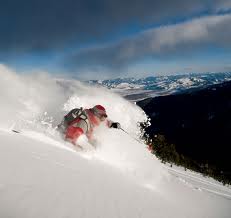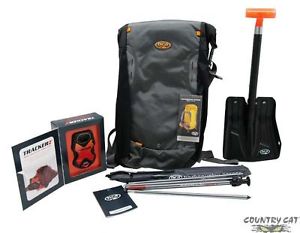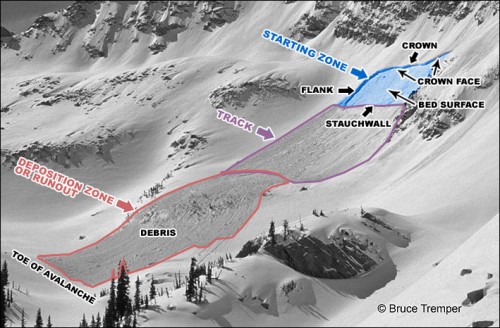Skiing the backcountry is one of the most unique experiences that one can witness. Being out in the mountains riding untracked lines in the deepest powder is an unbelievable encounter with nature. Backcountry skiing and riding is becoming extremely popular in the ski industry due to the increase in technology, giving more and more people access to this type of skiing/riding. We are lucky enough to live right near some of the best backcountry riding in the country and getting out there could not be easier. Here are some basic avalanche safety tips to help keep you safe this year. Be part of the informed group to learn about the environment and dangers they will encounter.

Before You Go
Decision making skills is a large part of riding the backcountry. Before venturing into the backcountry, make sure to check the avalanche forecast in your area and weather conditions for the day. If you are planning on skiing the backcountry for a season, attend an avalanche safety course or clinic to increase your knowledge. Always ski with a friend when venturing into the backcountry and make sure to not lose that person; problems are much easier solved with two brains instead of one. Make sure that you have the proper equipment as well as your fellow members of your backcountry party. Below is a basic list of equipment you will need along with some additional gear:
Required Gear
- Backpack- a smaller pack can do the trick for access from the resort, but for day touring or snowmobile touring, a larger pack that can fit extra items is preferred
- Avalanche Probe- a metal rod used to poke through avalanche debris for buried skiers
- Avalanche Shovel- collapsible shovel used to dig out avalanche victims
- Avalanche Transceiver- an electronic device worn on the side of the body to aid, has ability to send and receive radio signals
- High Energy Food
- Water

Additional Gear
- Snow Saw
- Airbag Pack
- Clinometers
- Avalung
- Extra Layers
Reading Your Terrain
Recognizing what types of terrain and pathways avalanches take is extremely important and can save your life. An open pathway down a backcountry run looks like it could be a great run, but could turn out to be an avalanche pathway. Make sure to look for anchors on the slope you would like to ski. Anchors are trees, or rocks and other natural aspects of the hill that will catch, stop or slow the slide. Slope steepness is also an important factor to look at. Most all avalanches start on hillsides with a slope between 35-40 degrees, but can be started in areas that are as steep as 25 degrees.

Have Fun
The backcountry is an amazing place and with the right level of preparedness can be enjoyed over and over again. Being over prepared and over knowledgeable will help make sure that every time you venture into the backcountry, you come home safe and sound after enjoying some of the best snow and turns around. We hope that this article helped increase your avalanche knowledge and sparked the interest to learn more about skiing/riding the backcountry.
Written By Robert Mrdutt


